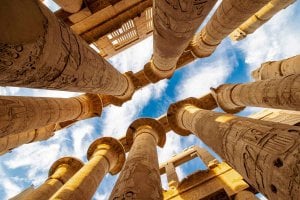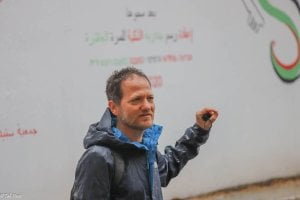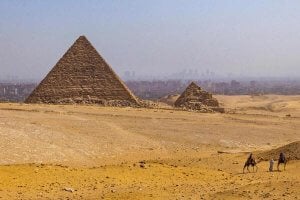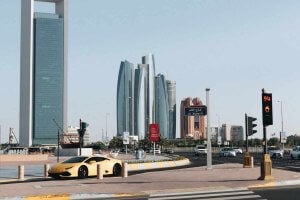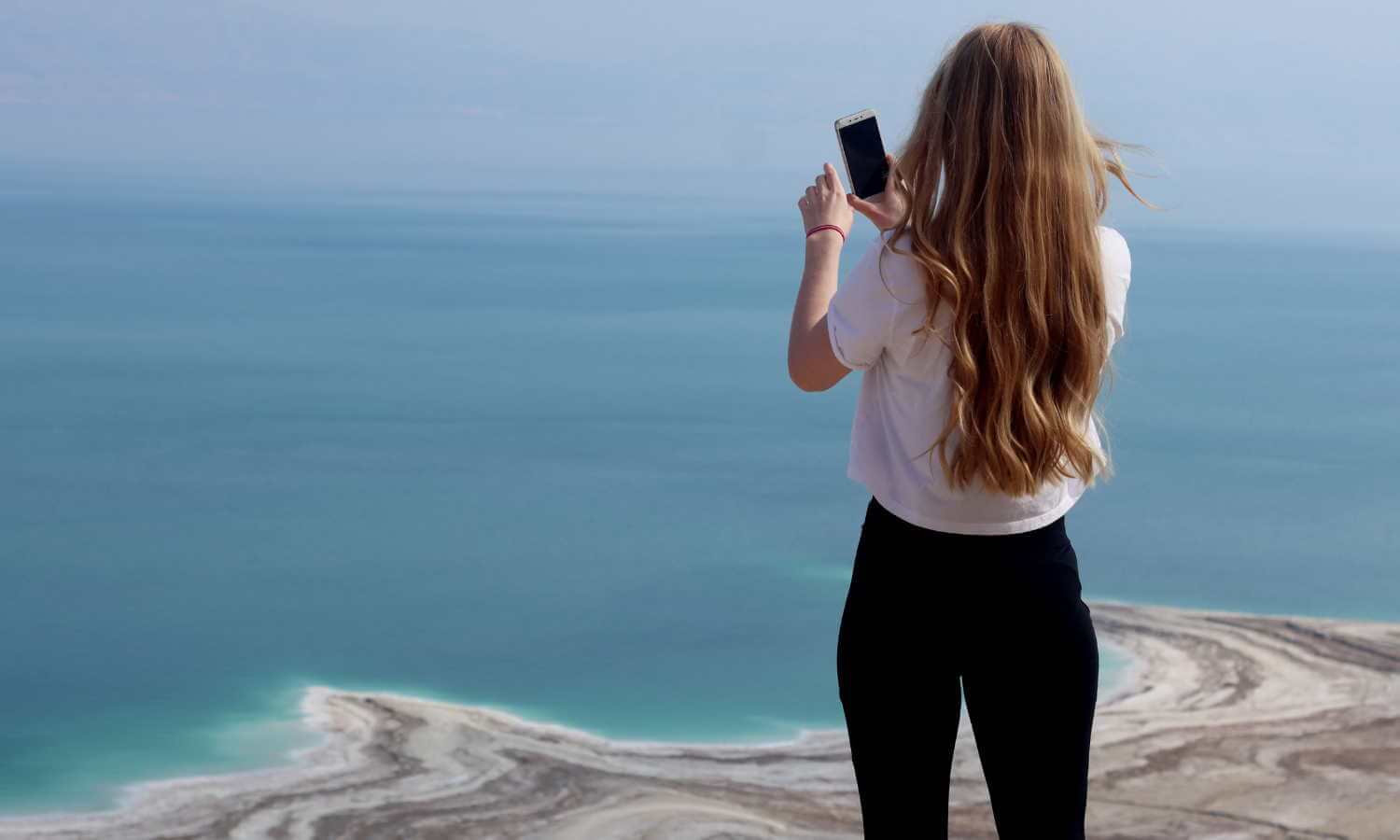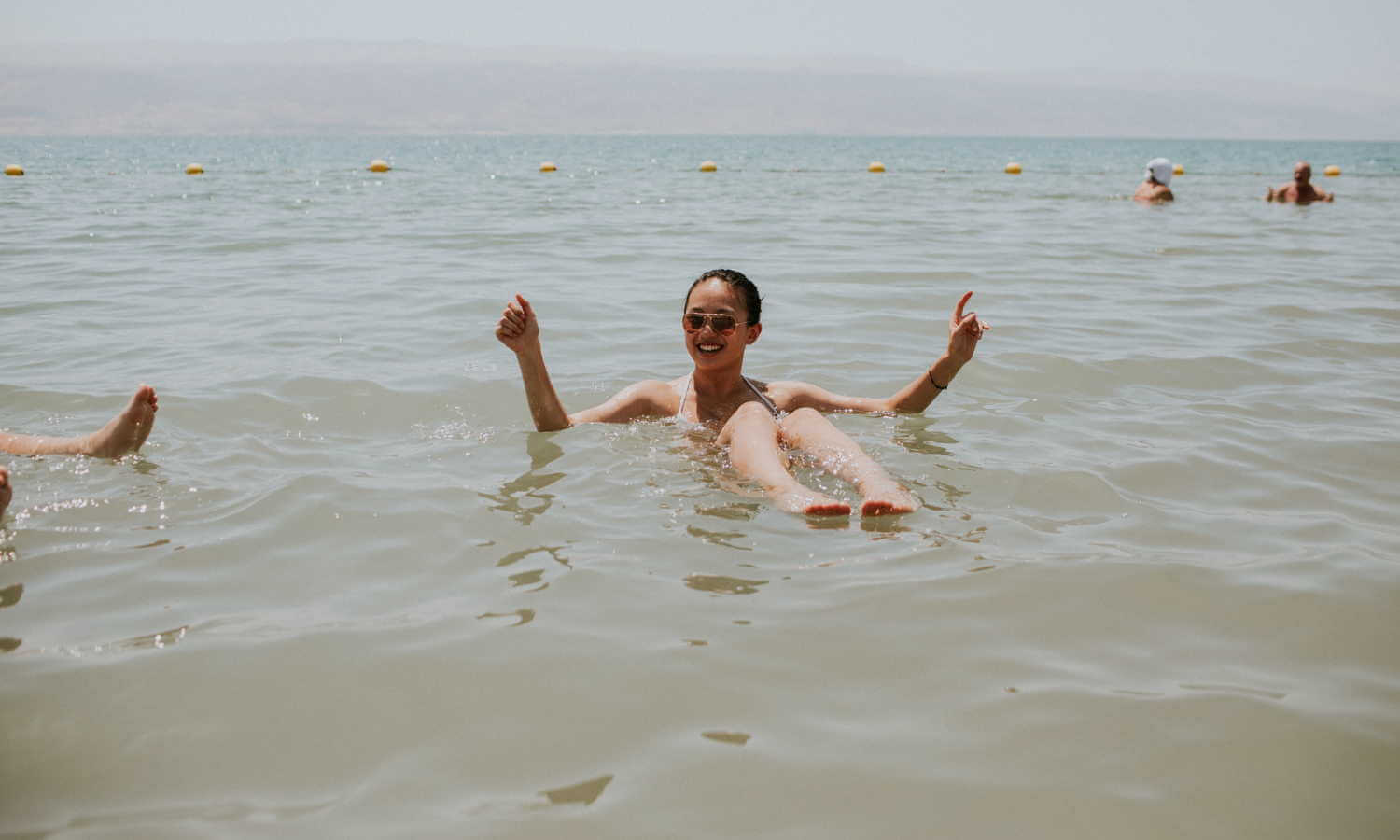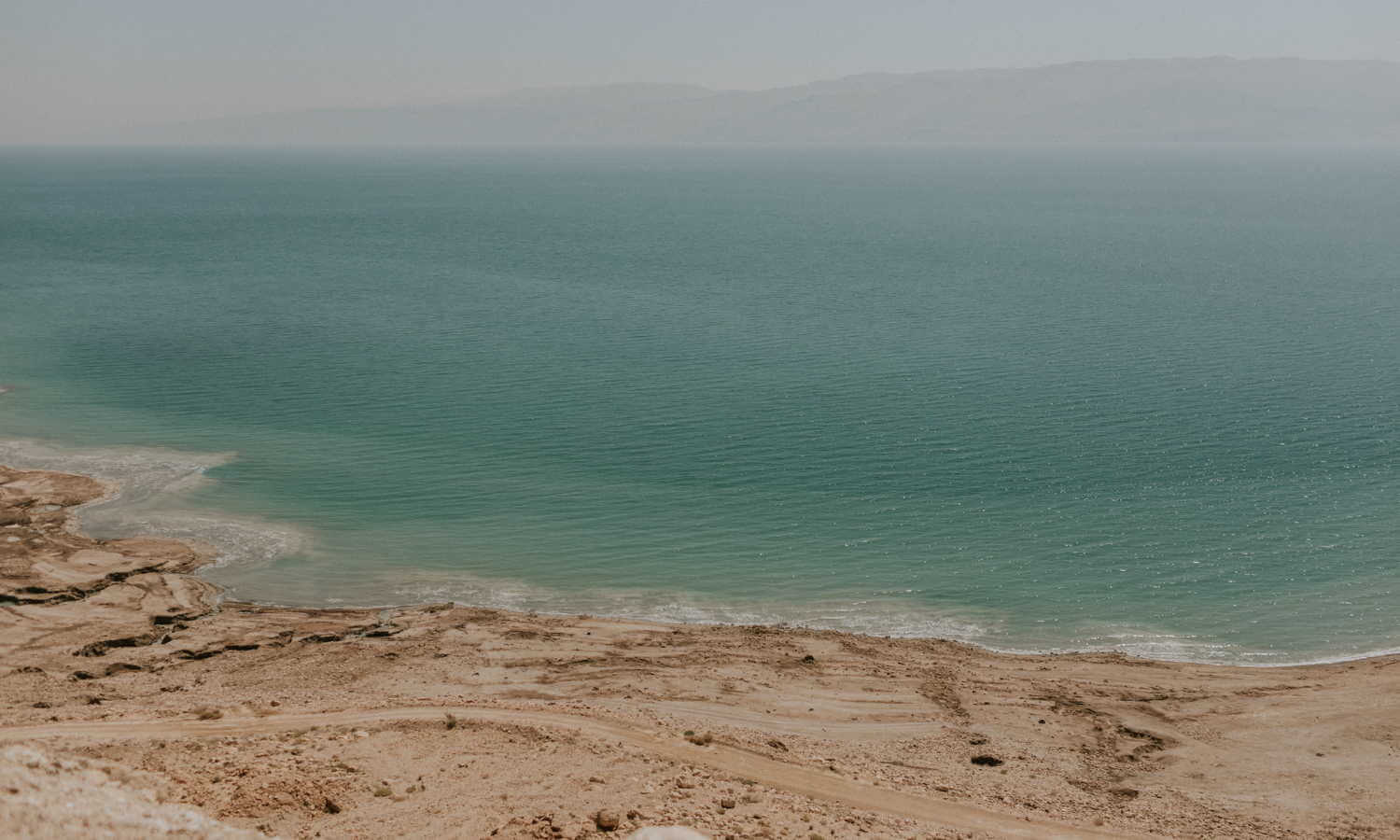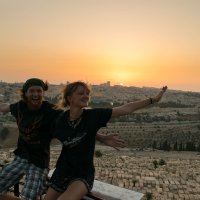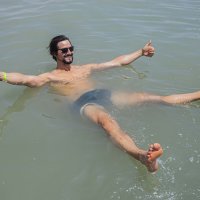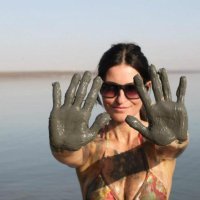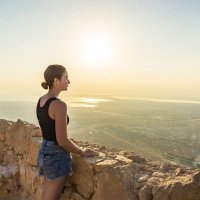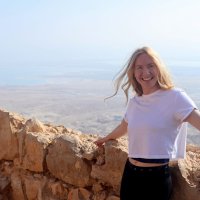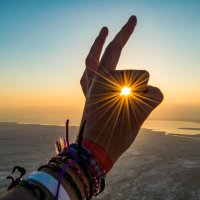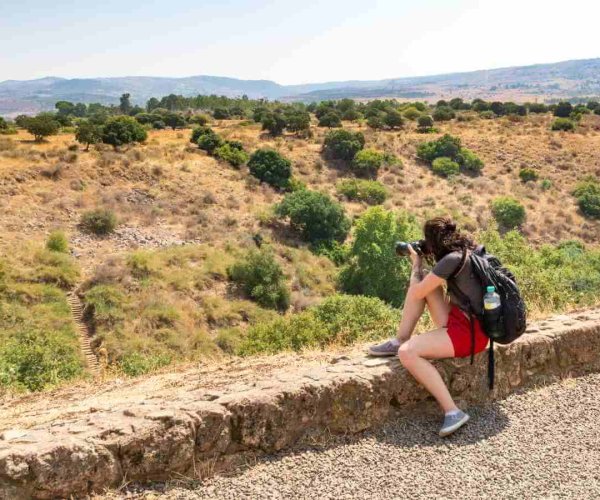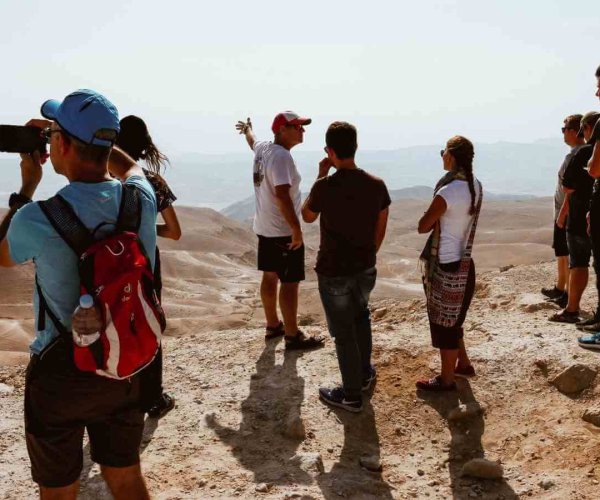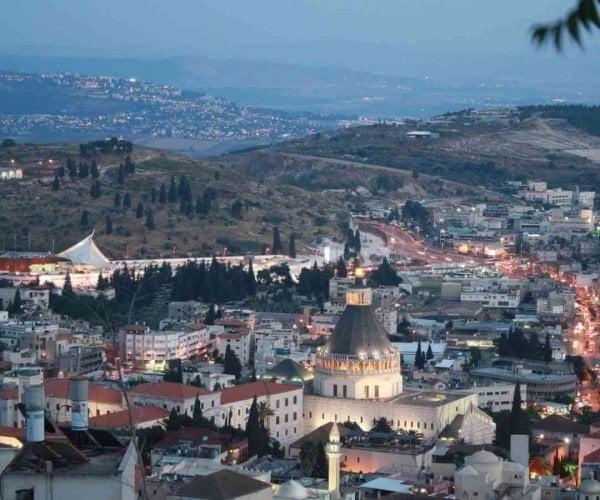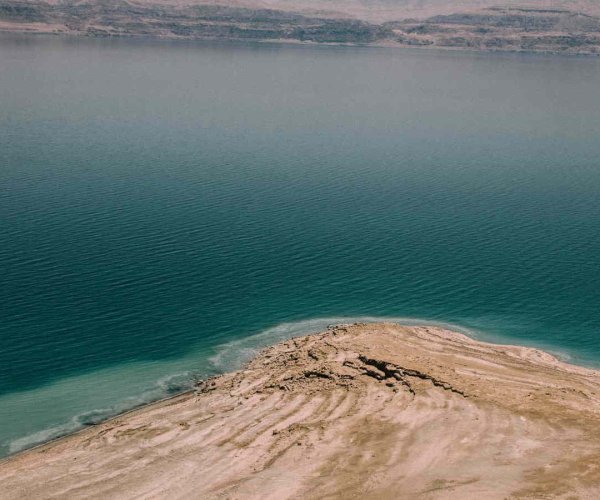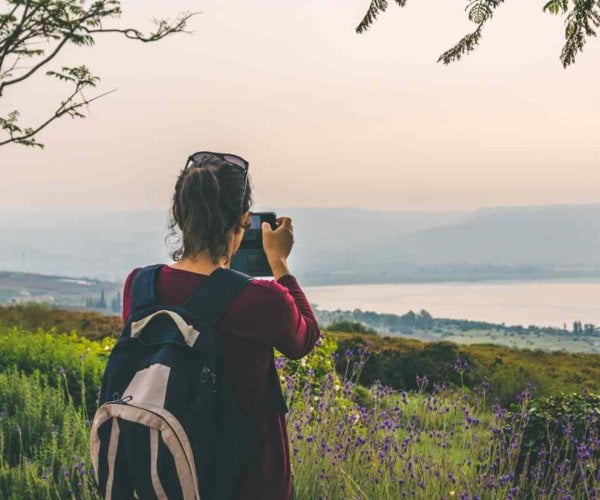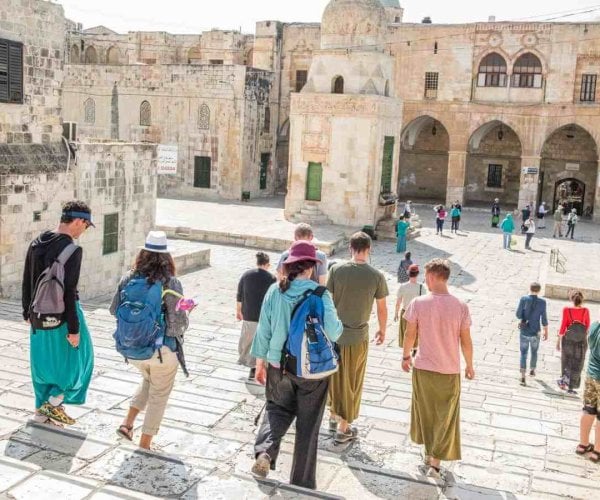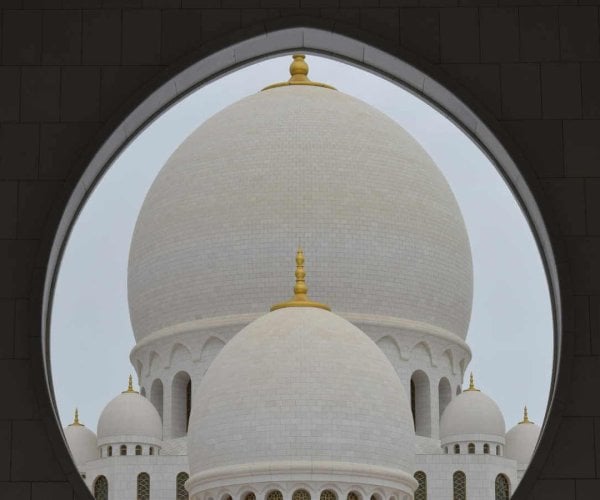1. The Dead Sea Borders Two Countries
Wedged between the Judean Mountains in the west and the Jordan Rift Valley in the east, the Dead Sea is bordered by two countries. It forms the end of the Jordan River between Israel and Jordan, which hints at its exact location—about two and a half hours from Tel Aviv and a one-hour drive from Amman. To reach the Jordanian side of the Dead Sea from Israel requires you to enter via the Jordan River/Sheikh Hussein Border Crossing. From there, it’s about a 25-minute drive to the northern tip.
2. It’s the World’s Deepest Hypersaline Lake
This 304-meter (997-feet) deep body of water is the deepest hypersaline lake (comprising huge concentrations of sodium chloride and other salts) globally. In just one liter of its water, you’ll collect over 300 grams of salt! It’s also the lowest point on Earth, with its surface reaching an impressive 430 meters below sea level! That’s around 4 and a quarter football fields long.
3. You Can Float On Water
Due to its highly saline water, this salty lake has a salt density of around 32%—almost times more compared to the ocean. As you inch your way into the water, the salt levels prohibit your body from sinking for a special moment of relaxation as you float on the surface in this truly remarkable experience. This effortless buoyancy is unparalleled and attracts locals and tourists who enjoy an extraordinary experience. Your skin will thank you too, with splendid nourishing mineral properties relaxing the nerves and stimulating the circulation system (more on that below!).
4. Its Waters Are Therapeutic
Infused within its salty water is an abundance of minerals known for their healing and therapeutic properties. The mud too, found thick on the seabed, is full of minerals—sulfur, calcium, magnesium, and potassium among its 20 plus. Scoop it up and slather a thick layer over your body, letting your skin absorb its richness. Known for stimulating blood circulation and anti-inflammatory capabilities, the blend of salty water can treat many conditions, including arthritis, psoriasis, and dermatitis.
5. The Dead Sea is Drying Up
If the Dead Sea is on your must-visit list, book your trip there sooner than later. That’s because the lake is drying up—and at a fast pace, around three feet a year. This is largely due to the challenge of topping up its natural water sources, which have been diverted to other uses. Replenishing the water also relies on rainfall—a scarce occurrence in the desert. Levels will eventually stabilize, so even though shrinking is a challenge on the reversible front, the Dead Sea still has a future.
Abraham Tours has a selection of trips to the Dead Sea and Masada region, for a no-fuss travel experience.
6. It Was Formed a Very Long Time Ago
Although it’s impossible to pinpoint when, historical evidence suggests the Dead Sea’s initial formation was over two million years ago. During this time, the land between the Jordan Rift Valley and the Mediterranean Sea rose in such haste that the ocean water ceased to spill into the local area, manifesting as an enclosed lake. At the same time, clay, sandstone, rock salt, and other sediments blanketed sand and gravel. Fast forward to around 7,000 years ago and evaporation led the lake to shrink to what we know as the Dead Sea today.
The Dead Sea has set the scene for many events in biblical history, including where the prophet Ezekiel had visions and where King Saul sought refuge.
7. The Asphalt Was Used For Mummification
Asphalt (bitumen) from the depths of the Dead Sea played a tremendous role in the antiquity trade. Within its seabed pores are organic-rich sediments that, among their purposes, were once exported to Egypt for mummification. Although its precise uses are unknown, the asphalt was likely used for the preservation process to halt biological and flesh decay—due to its disinfectant properties. It was also used as a mechanical shield on mummy wrapping, as a prevention of bacteria and moisture, among other measures.
8. There are Spectacular Salt Formations
Receding water levels have revealed stunning salt, mushroom-shaped formations in a path-like stretch, found along the coastal strip of Ein Bokek Beach. These breathtaking, pure, crystal-like formations, forming tranquil islands amid the oily-rich waters, are an idyllic spot to snap photos from your trip.
9. You Won’t Spot Any Sea Life
The Dead Sea is called such because it lacks any living marine life. While other lakes brim with fish, turtles, and frogs, the Dead Sea is void of life. The same goes for aquatic plants. Due to the super high levels of salinity, the water is devoid of life—bacteria aside. However, there’s ample wildlife back on land to spot in the Negev region. During your travels, be on the lookout for the iconic Nubian Ibex and the Negev Gazelle.
10. There are Plenty of Beaches Around
After a dip and a float, it’s time to relax on the sandy stretch of beach. At the Dead Sea, you have your pick of a few. From north to south:
- Kalia Beach: A quieter spot secluded from the main throng, this beach is home to a natural mud area, camping ground, showers, beach chairs, and umbrellas, alongside a restaurant and barbecue area.
- Neve Midbar Beach: Surrounded by sand, a shaded grassy area, camping grounds, a swimming pool, a restaurant and plenty of parking, this beach is idyllic for couples, families, and friends to relax by the Dead Sea
- Mineral Beach: Founded in 1996 by members of Kibbutz Mitzpe Shalem, this beach gained its title for its natural, hot sulfur-spring water pools—which are the special bonus of this resort. A beach-side spa has a list of treatments, including Shiatsu and hot-stone massages, plus yoga workshops.
- Ein Bokek Beach: Right in the middle of the main hotel strip, this beach is split into south and central areas. Everything you need is at your fingertips, including beach chairs and shades, showers, a snack bar, a lifeguard, shopping nearby, and the Ein Bokek Solarium—for skincare treatments and therapy.







